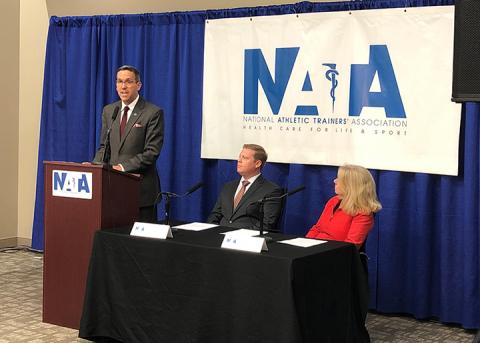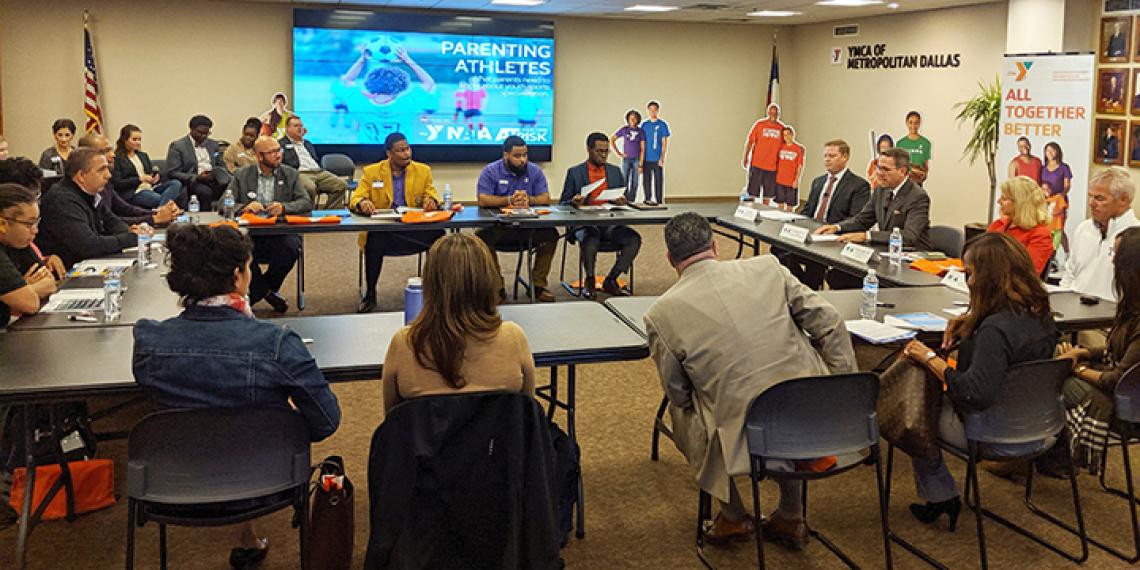
Youth sport specialization is a hot topic for the athletic training profession. Not only is the October Journal of Athletic Training a special thematic issue dedicated to the topic, NATA has released an official statement with health-focused recommendations to reduce the risk of injury due to youth sport specialization.
“Studies show that young athletes often see specialization as a prerequisite to advancing, [whether it’s] making the varsity team, earning a college scholarship or progressing to the professional level,” said NATA President Tory Lindley, MA, ATC. “When athletes specialize too early, or engage in excessive play, they are increasing the probability of injury and reducing the chances of achieving their goals. We want to help athletes and parents recognize health is a competitive advantage.”
NATA’s statement has been endorsed by Professional Football Athletic Trainers’ Society, Professional Hockey Athletic Training Society, Professional Soccer Athletic Trainers’ Society, National Basketball Athletic Trainers’ Association, Professional Baseball Athletic Trainers’ Society and the NATA Intercollegiate Sports Medicine Council. The statement includes the following recommendations, all aimed at address the health and well-being adolescent and young athletes:
1. Delay specializing in a single sport for as long as possible: Sport specialization is often described as participating and/or training for a single sport year-round. Adolescent and young athletes should strive to participate, or sample, a variety of sports. This recommendation supports general physical fitness, athleticism and reduces injury risk in athletes.
2. One team at a time: Adolescent and young athletes should participate in one organized sport per season. Many adolescent and young athletes participate or train year-round in a single sport, while simultaneously competing in other organized sports. Total volume of organized sport participation per season is an important risk factor for injury.
3. Less than eight months per year: Adolescent and young athletes should not play a single sport more than eight months per year.
4. No more hours/week than age in years: Adolescent and young athletes should not participate in organized sport and/or activity more hours per week than their age (i.e., a 12-year-old athlete should not participate in more than 12 hours per week of organized sport).
5. Two days of rest per week: Adolescent and young athletes should have a minimum of two days off per week from organized training and competition. Athletes should not participate in other organized team sports, competitions and/or training on rest and recovery days.
6. Rest and recovery time from organized sport participation: Adolescent and young athletes should spend time away from organized sport and/or activity at the end of each competitive season. This allows for both physical and mental recovery, promotes health and well-being and minimizes injury risk and burnout/dropout.

Lindley, David Bell, PhD, ATC, co-guest editor of the October Journal of Athletic Training, and Michele LaBotz, MD, FAAT, CAQSM, with the Tufts University School of Medicine, held a press conference Oct. 16 to discuss the statement and its recommendations. Later that day, the panel visited The Y of Metropolitan Dallas, where they participated in the “Parenting Athletes” Facebook Live event hosted by NATA’s At Your Own Risk initiative. Parents and guardians were able to hear from Linley, Bell, LaBotz and Jamie Reed, ATC, with the Texas Rangers, about the risks associated with youth sport specialization. You can view a recording of the event on At Your Own Risk's Facebook page.Cut
To continue the discussion around youth sport specialization, NATA has named the third full week of October (this year, Oct. 21-25) as Youth Sport Specialization Awareness Week. Throughout the week, NATA will provide the public with information about sport specialization and the possible risks to health and safety. Stay tuned for updates!
Download the Youth Sport Specialization Safety Recommendations infographic. Visit the At Your Own Risk website for more youth sport specialization resources.





